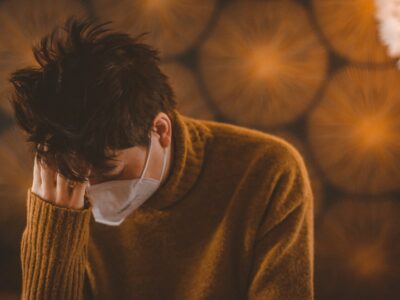Paul Kirsch, 65, lived with amyotrophic lateral sclerosis (ALS) and was used to receiving care at home. He was fully vaccinated against COVID-19 but was still careful about who he let into the house. His wife, Emily Kirsch, says he only met with close friends and avoided large gatherings.
But one of his at-home caregivers wasn’t vaccinated. They ultimately contracted the coronavirus and passed it onto Paul, leading to his death on September 5. Now that he’s gone, his wife is reminding everyone to get vaccinated.
Battling COVID-19 with ALS
According to Paul’s obituary, “Although Paul was fully vaccinated, ALS complicated his recovery from COVID.”
The National Institute of Neurological Disorders and Stroke (NINDS) defines ALS as a rare neurological disease that breaks down the nerve cells that control voluntary muscle movements. There is no cure and symptoms get progressively worse over time.
While the CDC doesn’t list ALS as a pre-existing condition that increases a person’s chances of serious illness from COVID-19, recent data from the Department of Veterans Affairs shows that veterans with ALS are three times more likely to die of COVID-19 than veterans without the condition.
Getting Care from the Unvaccinated
While many of the nation’s healthcare facilities now require the vaccine for all staff members, that’s not always true of at-home healthcare companies. It often depends on the state and the company in question. In Oregon, where Paul lived, all healthcare providers are required to get vaccinated by October 19, but that rule doesn’t apply to at-home healthcare workers.
According to the Service Employees International Union 503, which represents at least 40,000 home care workers, the person receiving care is the employer and it’s up to them to set terms with the person coming in and out of their home.
“A consumer can fire them if they choose not to” be vaccinated, said union spokesman Ben Morris.
Paul couldn’t walk due to ALS. In April 2020, he started using a device that allowed him to pick out words and letters using his eyes.
According to his wife, Paul’s caregiver, Amy Balderas, spent about eight hours a day feeding, dressing, and bathing Paul. She wore a mask all the time, but Paul did not.
Emily told a local news outlet that Balderas was the only at-home caregiver coming in and out of the house that refused to get vaccinated. She says Balderas was concerned about the long-term effects of the vaccine. But Paul decided to keep her on because she was good at her job and had been caring for him for years.
Balderas woke up with body aches on August 20, and Paul developed symptoms a few days later. The at-home nurse said she spent time with five friends and visited a chiropractor’s office the week before she got infected, but she’s not sure how she contracted COVID-19.
Paul soon started having trouble breathing and had to go to the ER. Emily says he tested positive for COVID-19 and had to be moved into the ICU due to his condition.
She remembers watching the nurses take Paul away. “If you need to go, the good Lord’s waiting for you,” Emily said. Paul looked back at her and raised his eyebrow to indicate “yes”. Paul died the next day.
Emily says she was originally angry at Balderas for bringing the virus into the house, but she knows that it was ultimately her husband’s decision to keep Balderas on even though she wasn’t vaccinated.
Balderas said Paul was “very understanding” of her reasons for not wanting to get vaccinated.
“It was very devastating to find out he had passed,” Balderas said. “And then to feel, like, ‘Oh my gosh, what if I did give it to him?'”
Now that Paul is gone, Balderas says she’s thinking about quitting the nursing profession altogether.
Paul’s obituary ends with a stern message: “Paul would encourage anyone who can to ‘please get vaccinated.'”
“He was very passionate that everybody get vaccinated,” Emily added. “Because of what he was going through.”
Despite everything she’s been through over the last few months, Balderas says she doesn’t plan to get the vaccine.

















